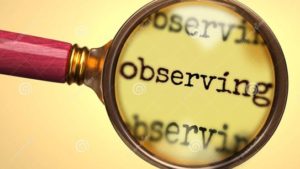By Robin Wilkins – Pūriri teacher
“Even when helping and serving the children, the teacher must not cease to observe them, because the birth of concentration in a child is as delicate a phenomenon as the bursting of a bud into bloom.”
Maria Montessori, The Absorbent Mind
Maria Montessori was a scientist and a medical doctor, trained in making careful observations. She applied these observation skills to children, much like an anthropologist or botanist, who observes the smallest details. She, watched, learned and changed.
One of the most vital teaching tools available to Montessori teachers is scientific observation. It is an integral and ongoing part of a Montessori teacher’s work. Observation allows the adult to assess situations, ākonga and strategies without judgment. Observation is a critical component of lesson planning and management of the classroom. We need to have insight about ākonga’s behaviour, social interactions and learning styles. With observation we can help them overcome difficulties and redirect their interest when necessary.
We remember to see who they are, not who we want them to be. We see them with new eyes as they are developing every day, every hour and every minute. They show us what they want or need to learn and then we can see how we can support that. Constant physical movement in a busy classroom can mean we miss out on cues (physical, verbal and social). As the adult, it is important to take time to step back, slow down and silently view the environment with fresh eyes.
Recently I observed two ākonga, at different times, take out the same piece of equipment. A piece was missing and it was very interesting to see the reaction. One put it back on the shelf, the other created the missing piece and then proceeded to practise the concept. This was something that I could have easily missed and gave me new insight into each ākonga.
What can we observe?
Observations can be made for many different reasons. We may need to look at how we can support social, emotional development in the classroom.
We may choose to focus on one thing at a time or observe one child for an extended time. Other times, we may be wondering about the classroom dynamic or an issue. We often see much more detail when we observe so we come to know a child better. We can see when there is a change in their development, for example having success with something they have previously struggled with.
Some questions we might ask about a child or the class include:
- Is there a feeling of respect and community in the classroom?
- Which materials are being used, which ones aren’t?
- Is the activity still productive or are they being safe?
- What stage of development is each ākonga in? Are they working to master a concept or skill or are they working towards abstraction?
- Is a child able to concentrate on their work? For how long
- Is there concentration being protected?
- What are the strengths and weaknesses of the class?
- Maybe some Grace and Courtesy lessons are needed to help create more peace in the classroom.
It’s also important for the adult to reflect on their observations and their own practises. We need to allow our mind to be open to change. Have I guided ākonga carefully enough to create a community of respect and peacefulness.
How often would I normally want to interrupt ākonga at work? Sometimes it takes a lot of self-control to stop the impulses of wanting to help or be in control. Are we speaking too much – are our voices constantly interrupting their focus?
We can learn to trust ākonga, especially if we take the time to really observe and understand them.
